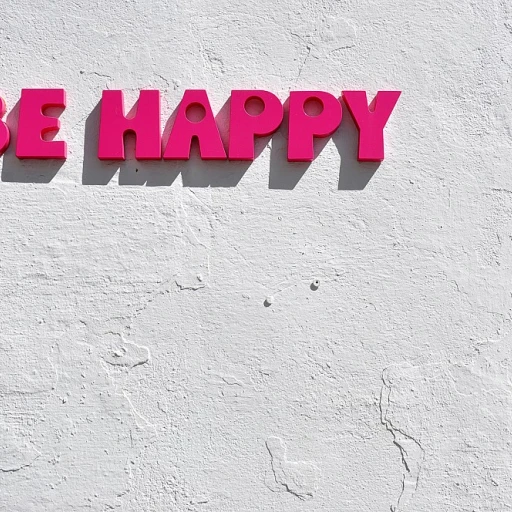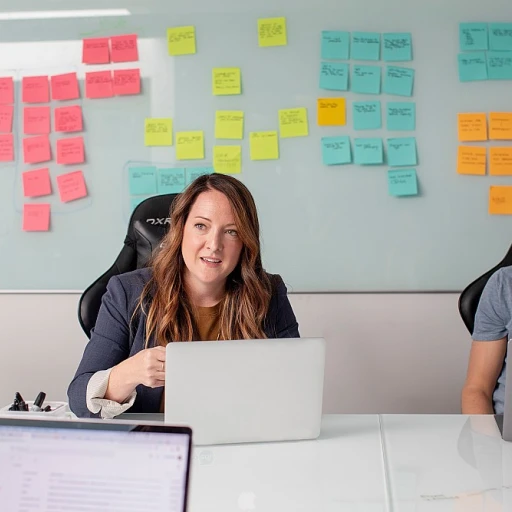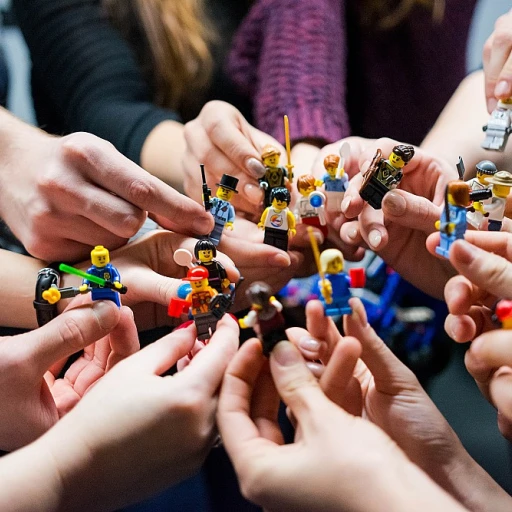Understanding Realistic Image Crafting
Exploring the Essence of Realistic Image Crafting
Realistic image crafting is a fascinating intersection of technology and art, where digital tools are used to create images that mimic the detail and quality of real-life photography. In the world of work tech, this skill has become increasingly important as businesses seek to enhance their visual content, making it more engaging and lifelike.
At its core, realistic image crafting involves using advanced image generators and art generators to produce highly detailed and photorealistic images. These tools allow creators to generate images from text prompts, transforming simple descriptions into stunning visuals. The process relies heavily on sophisticated algorithms that can interpret and render intricate details, ensuring the final product is both realistic and high quality.
Why Realistic Image Crafting Matters in the Workplace
Incorporating realistic images into workplace communications can significantly enhance the effectiveness of presentations, marketing materials, and even training modules. This is because photorealistic images capture attention more effectively than traditional graphics, leading to better engagement and retention of information.
Moreover, the ability to create images that are both realistic and highly detailed is a valuable skill in industries such as advertising, design, and media production. As companies continue to embrace digital transformation, the demand for professionals skilled in realistic image crafting is likely to grow. For more insights on how digital change is impacting various sectors, you can explore how HR tech is changing the workplace.
Essential Software and Platforms for Crafting Realistic Images
In the realm of realistic image crafting, leveraging the right tools and technologies is pivotal. These resources are developed to capture the intricate details and nuances necessary to create lifelike images. Let's explore some key software and platforms that have become essential for professionals in this field.
- Adobe Photoshop: Known for its comprehensive suite of tools, Photoshop remains a favorite among graphic designers and image crafters. Its features allow users to generate highly detailed images and refine them to achieve a photorealistic quality.
- Blender: As a free and open-source 3D creation suite, Blender offers advanced functionalities for crafting, rendering, and animating realistic images. Its versatility makes it a valuable tool for generating art in diverse industries.
- Canva: While primarily known as a graphic design tool, Canva’s premium features provide useful options for creating detailed visuals. With its user-friendly interface, it's a great option for those looking to generate high-quality images without extensive experience or a high learning curve.
Meeting Workplace Needs with Realistic Image Crafting
Realistic image generation finds extensive applications across different workplace scenarios, contributing significantly to visualization, presentation, and marketing efforts. However, the demand for realism and detail can pose challenges that must be addressed by employing optimal strategies and platforms.
- Marketing and Advertising: Realistic images captivate audiences, enhancing the appeal of promotional materials. Through advanced photorealistic imaging and tools like image generators and photography software, businesses can create compelling ad campaigns.
- Training and Development: In sectors like architecture or automotive, realistic image generation aids in detailed visualization and simulation exercises. 3D models generated through image creators help trainees envision and interact with detailed virtual environments.
For those looking to further integrate realistic image crafting in talent acquisition or other domains, consider exploring insights from
understanding talent acquisition platforms for a better alignment with technological advances.
Balancing innovation in image creation with the specific demands of varied workplace applications continues to drive the evolution of this field. Understanding the capabilities and limitations of different tools ensures that professionals can effectively meet the visual and artistic expectations of their organizations.
Applications in the Workplace
Transformative Use Cases in the Workplace
The integration of realistic image crafting in workplace settings is revolutionizing how businesses operate and present themselves. This tech marvel enables diverse applications that range from marketing to interior design, enhancing both efficiency and creativity.
- Marketing and Branding: Companies utilize realistic image generation to create vivid and engaging visuals for campaigns. Whether you need high-quality photorealistic images for ads or detailed product photos, image generators serve as a tool for crafting visuals that grab attention and convey authenticity.
- Product Development: Realistic images allow teams to visualize new products before they hit the market. By using generated art, designers can experiment with form and function without the need for physical prototypes, thus reducing costs.
- Interior Design and Architecture: Image creation tools aid architects and designers in crafting hyper-realistic renderings of spaces. Clients can explore and even manipulate detailed photo designs to fit their preferences, enhancing customer satisfaction.
- Training and Development: Generated images enhance e-learning modules by providing realistic scenarios for better engagement. Training materials enriched with detailed images or videos make content more relatable and easier to comprehend.
The utilization of these tools is not only limited to specialists. With platforms offering a range of plans from generator free to premium options, businesses can choose the level of sophistication required for their specific needs.
To navigate the rapid advancements in realistic image crafting, professionals can explore resources such as
affordable HR strategies to align technological ambitions with organizational goals.
Challenges in Realistic Image Crafting
Navigating the Complexities of Image Generation
Realistic image crafting, while transformative in its capabilities, isn't without its challenges. Crafting highly detailed and photorealistic images requires both the sophistication of the generator tools and the skill of the image creator. As technology advances, understanding the core challenges in realistic image crafting becomes essential for professionals in the field.
Data Quality and Accessibility
One primary challenge lies in the quality of the data sets used by an image generator. To generate images that are highly detailed and lifelike, the input data must be robust and varied. However, accessing these quality datasets can be costly, as premium data often comes with a price tag. Free data sets might not offer the same level of detail or diversity, affecting the realism in generated art. The balance of maintaining data quality while ensuring accessibility is a continuous battle for professionals looking to create images that truly reflect reality.
Balancing Detail and Creativity
Striking the right balance between accurate replication of real-world details and maintaining a degree of creativity is another challenge for image crafters. While the aim is to create highly realistic and detailed images, there's an ongoing necessity to inject originality into generated art to avoid monotony. It demands a nuanced art of prompting and iteration, ensuring that generated images are both new and artistically valid.
Technological and Ethical Dilemmas
The rapid evolution of generator tools comes with its own set of ethical dilemmas. The ability of these tools to generate photorealistic images raises questions about authenticity and copyright, especially when images generated could potentially infringe on existing artworks or imitate real photography. On a technological level, ensuring that text image data and algorithms respect privacy and security concerns is paramount.
Moreover, with advancements in realistic image generation, the chance of misuse for generating fake news or misleading content rises. Image creators and companies like art generator developers are under pressure to establish regulations and ethical guidelines to guard against such abuses.
Resource Constraints and Skill Gaps
Another obstacle is the resource requirement for handling high-performance tools and managing the vast computational needs for generating detailed images. This challenge is compounded by a persistent skills gap in the industry. While demand for qualified image creators proficient in image generation is high, there’s often a lag in the depth of training available for professionals to master prompt generation techniques required for crafting photorealistic images effectively.
In the face of these hurdles, the industry continues to evolve, with new tools and training platforms emerging to support professionals in overcoming such challenges. The dynamic nature of this field suggests that, with proper investments in technology and workforce development, the gap between current capabilities and potential applications will steadily diminish.
Future Trends and Innovations
On the Horizon: Pioneering Developments in Image Crafting
As the work tech landscape evolves, mastering realistic image crafting is rapidly becoming essential. Pioneering technologies are setting the stage for more advanced applications.
Artificial intelligence (AI) and machine learning continue to revolutionize this field. Image generators are increasingly adept at producing high-quality, highly detailed images from simple text prompts. This makes creating photorealistic images simpler and faster than ever. With this art generator capability, businesses have access to premium tools that generate images that stand out in terms of realism and detail.
Moreover, open-source software and tools offer opportunities for creators to download and use image generators free of charge. This accessibility promotes innovation, enabling users to explore and develop new techniques in photorealistic image generation.
Looking ahead, advancements in neural networks promise to elevate quality further. Requests for more deeply integrated photorealistic photography tools are increasing. These innovations are set to enhance the detail and authenticity of generated art, broadening applications across sectors from advertising to architectural visualization.
In essence, as technology continues to advance, realistic image crafting tools will likely become ever more embedded in workplace processes, enabling professionals to push the boundaries of creativity and efficiency.
Skills and Training for Professionals
Enhancing Skills for Realistic Image Crafting
The journey to becoming an adept artist in realistic image crafting is as dynamic as it is rewarding. As the digital realm continues to advance, the skills needed for mastering the art of generating photorealistic images are evolving rapidly.
Understanding the foundational tools and technologies forms the bedrock of realistic image development. Today, having a robust skill set means being proficient with both classic and modern tools that allow creators to generate high quality images efficiently. The integration of both free and premium tools is crucial, as it provides access to a variety of features and options for those seeking to generate detailed and photorealistic creations.
Moreover, as explored in other sections, knowledge of key technologies is fundamental. Familiarity with software and platforms that offer image generator capabilities, as well as text to image conversion, is indispensable in this tech-driven craft. Iterative practice using these tools allows creators to refine their art and elevate the realistic quality of their generated images.
Beyond technical skills, it is essential for professionals to keep an eye on emerging trends and innovations. Technologies are constantly developing, bringing forward new techniques in image generation and art creation. Engaging with online communities and continuous learning through webinars, workshops, and courses can provide invaluable insights and enhance one’s expertise in this field.
Lastly, fostering a creative mindset is key. The ability to conceptualize visually compelling scenes and translate text prompts into compelling artworks can set an artist apart. Encouraging creativity not only enhances the quality of one's projects but also furthers their impact in workplace applications, making the skills learned invaluable in today's work tech landscape.
These skills and training not only prepare professionals for current workplace technologies but also equip them with the tools needed to adapt to future shifts in image crafting technologies.








